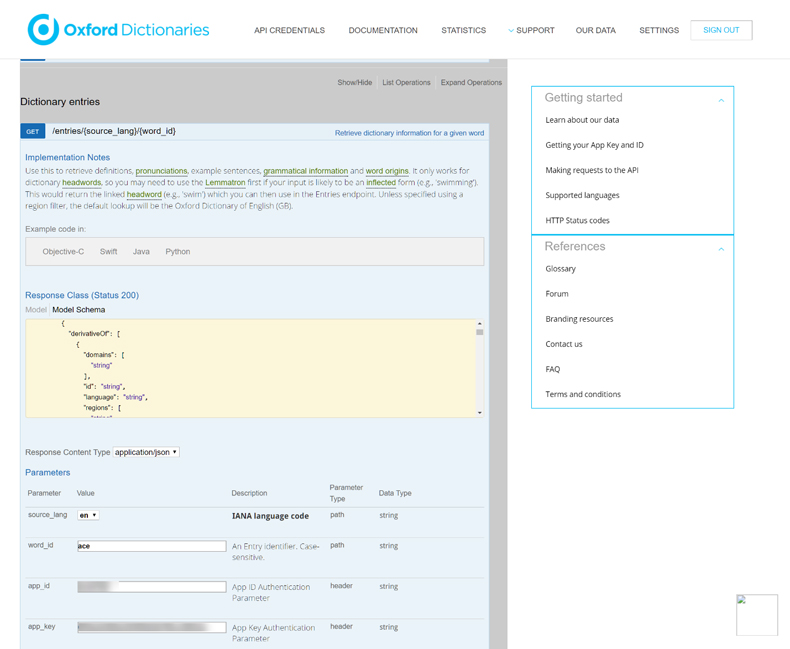How to make your first call with the Oxford Dictionaries API [updated for v2]
The Oxford Dictionaries API is used by some of the world’s largest and most innovative organisations, supporting easy access to our world-renowned dictionary content. Products from Amazon, Google, Facebook and others benefit from customised wordlists and language data, offered in multiple languages.
You can connect your application or service to the Oxford Dictionaries API and begin accessing our resources in a few simple steps.
Step 1: Sign up for an account
Our documentation includes test credentials that allow you to connect to the Oxford Dictionaries API straight away, but for full, unrestricted access, you’ll need to sign up for one of our plans. A prototype account is available which provides limited access to our language data, with 1,000 requests per month, and a limited request rate. It’s a good option for establishing API usage.
Once you’re up and running, be sure to check out our Developer account, which has no usage cap and tiered discounts. Alternatively, you can contact us to find out about tailored plans for Enterprise and Research users.
Step 2: Get Your API credentials
Once you’ve signed up, log into https://developer.oxforddictionaries.com/ to review your API credentials.

Your credentials comprise of the following:
- API Base URL – a consistent element in all API requests.
- Application ID – to be sent in each API request.
- Application Keys – used to authenticate requests. Up to five keys are allowed per account.
Step 3: Make your first API call
The Oxford Dictionaries API supports a wide range of features, including comprehensive word search and definition retrieval, thesaurus support (finding similar or opposite words to search terms), language translation, contextual searches (such as retrieving sentences containing your search term to give you data about the context of a word), statistical analysis, and more.
Our API documentation includes detailed guidance on each operation, with example code snippets available in Object-C, Swift, Java, and Python.

Implementation notes provide guidance on the use of each operation, alongside definitions of language-related terms. To learn more about these terms, be sure to check out our glossary. You’ll also find examples of API operation responses, schema, HTTP status codes and supporting messages.
To make experimentation easier, parameters are listed with your Application ID and Key – simply hit the Try It Out! button to view code snippets pre-configured with your API credentials, including the HTTP request, your request URL, request headers and response details.

Step 4: Learn more and connect with the community
We hope you’ll find your first steps with the powerful and flexible features of the Oxford Dictionaries API simple and rewarding. Once you’re ready to progress, learn more about making API requests via our documentation, check out our FAQs and connect to the Oxford Dictionaries API Developer Community at our forum. You can request help, share knowledge and ideas, provide feedback to the Oxford Dictionaries API team and collaborate with other developers.
We’re really excited by the potential of the Oxford Dictionaries API, which is already powering industry-leading devices, applications and services. Welcome onboard and we look forward to seeing how you use our tools to harness the power of language in your projects.
- The opinions and other information contained in OxfordWords blog posts and comments do not necessarily reflect the opinions or positions of Oxford University Press.








Comments